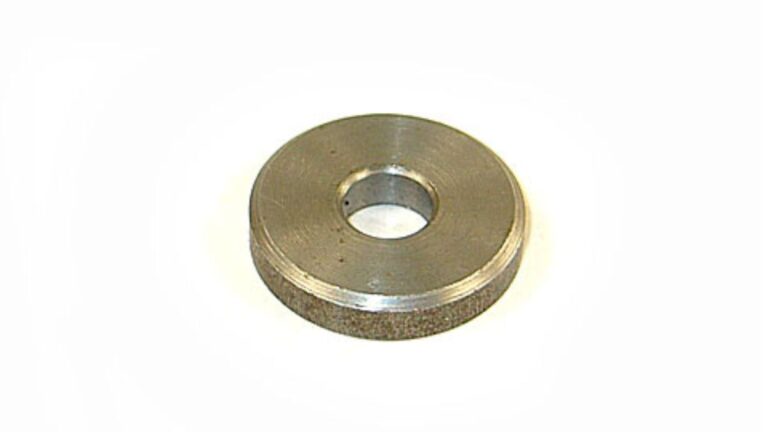Dispel Magic is one of the most powerful and versatile spells in Dungeons & Dragons 5th Edition (5e). It allows spellcasters to neutralize harmful magical effects, dispelling enchantments, curses, and various other types of magic that could be affecting creatures, objects, or areas. Whether you’re trying to break free from a debilitating curse or eliminate an enemy’s magical defense, Dispel Magic can often be the key to turning the tide of battle.
This article will break down Dispel Magic 5e, explaining how it works, when to use it, and why it’s considered a vital tool for many spellcasters.
1. Dispel Magic 5e Overview
Dispel Magic is a 3rd-level abjuration spell available to sorcerers and wizards in Dungeons & Dragons 5th Edition. It is primarily designed to end active magical effects that are already in play, making it a vital tool for overcoming spells that provide harmful or restrictive effects. Whether used to neutralize enemy spells or help an ally escape from enchantments, Dispel Magic has a wide range of applications.
Here is the spell summary:
- Casting Time: 1 action
- Range: 120 feet
- Components: Verbal (V), Somatic (S)
- Duration: Instantaneous
- Classes: Sorcerer, Wizard
- Level: 3rd-level abjuration
Dispel Magic has two key effects based on the level of the spell you wish to remove and your character’s ability.
2. How Does Dispel Magic Work?
Instantaneous Effect
When you cast Dispel Magic 5e, the magical effect you target is immediately ended if it is a spell of 3rd level or lower. There’s no roll required for these spells. For example, if an enemy cast a Hold Person spell on one of your party members, casting Dispel Magic would instantly end that effect.
However, when the spell you are targeting is 4th level or higher, you must make an ability check to dispel it.
Targeting Magical Effects
You can use Dispel Magic on:
- Creatures: A creature affected by a magical condition or spell (e.g., a creature affected by the Hold Monster spell or a Polymorph spell).
- Objects: Magic items, enchanted objects, or cursed items. You can break enchantments or curses, making Dispel Magic useful for deactivating magical traps or dispelling magical wards.
- Magical Effects: Any ongoing magical effect, including an area of effect, such as a Wall of Fire or Cloudkill spell, can be neutralized with Dispel Magic.
The Spellcasting Ability Check
If you are attempting to dispel a spell of 4th level or higher, you will need to make a Spellcasting Ability check. This is a roll of a d20 plus your spellcasting modifier. The DC (Difficulty Class) for this check is 10 + the spell’s level.
For example:
- If you are dispelling a 5th-level spell, the DC for your check is 15 (10 + 5).
- If you succeed, the spell ends immediately. If you fail, the magical effect remains in place.
3. When to Use Dispel Magic
Breaking Spells on Allies or Enemies
One of the primary uses of Dispel Magic is breaking spells that are affecting creatures, especially those placed on your allies by enemies. Common examples include:
- Enchantment Spells: Such as Hold Person or Dominate Person, which paralyze or control an ally.
- Illusion Spells: Such as Invisibility or Mirror Image, which hide or confuse.
- Polymorph Effects: If your character or an ally has been transformed into a creature, Dispel Magic can turn them back.
It’s also useful for removing magical buffs. For instance, if an enemy casts a Shield of Faith spell on themselves or Haste to speed up their actions, Dispel Magic can remove these advantages.
Removing Magical Traps
Magical traps are often hidden or disguised using spells like Glyph of Warding or Symbol. Dispel Magic is incredibly effective in disarming these traps. With the right timing, it can prevent triggering traps that would otherwise harm or incapacitate the party.
4. Dispel Magic vs. Other Magic-Canceling Spells
While Dispel Magic is a very powerful spell, it is not the only spell designed to neutralize magic. Here’s how it compares to other similar spells:
Counterspell vs. Dispel Magic
- Counterspell is used to negate a spell as it is being cast. The spellcaster must use it during another caster’s casting time. It’s incredibly useful in interrupting enemy spellcasters before they finish their spell.
- Dispel Magic, on the other hand, is used to remove an ongoing magical effect that has already been cast.
Both are powerful, but Counterspell is more proactive, while Dispel Magic is a reactive tool.
Greater Dispel Magic
Some spellcasters, like wizards with access to higher-level spells, can cast Greater Dispel Magic (a 5th-level version of Dispel Magic). This upgraded version offers more power and can dispel spells of 5th level or lower automatically, without needing an ability check.
5. Dispel Magic in Campaigns: Examples of Use
Dispel Magic can be useful in many scenarios. Here are some examples:
In Combat
In battle, Dispel Magic can be a game-changer. If an enemy caster has placed a Haste spell on themselves, increasing their movement and actions, casting Dispel Magic can neutralize this advantage, making the fight much more manageable. Similarly, you can use it to dispel an area effect like a Cloudkill, which would otherwise deal damage over time to the party.
In Exploration and Problem Solving
Exploration is another area where Dispel Magic shines. If your party is trapped in a magic circle or cursed by a magical artifact, Dispel Magic offers a way out. It can also solve complex puzzles involving magical barriers or locked doors, giving your party more freedom to explore the world.
6. Advantages and Limitations
Advantages:
- Versatility: Can target a wide range of spells, creatures, and magical effects.
- No Duration: Once cast, the spell’s effect ends immediately without ongoing consequences.
- Low-Level Access: Available to sorcerers and wizards as early as 5th level.
Limitations:
- Spell Level Dependency: For spells of 4th level or higher, a successful check is required, which isn’t guaranteed.
- Limited Range: The 120-foot range is good, but you may need to be within that range to dispel a spell effectively.
- No Direct Offense: While Dispel Magic can neutralize effects, it doesn’t deal damage or have direct offensive capabilities.
7. Dispel Magic FAQs
1. What spells can be dispelled by Dispel Magic?
Dispel Magic can end any spell that is currently affecting a target, as long as the spell’s level is 3rd or lower. For spells above 3rd level, you need to make a Spellcasting Ability check.
2. Does Dispel Magic remove magical items or curses?
Yes, Dispel Magic can target cursed objects or magical traps, ending enchantments placed on objects.
3. Can Dispel Magic be used during combat?
Absolutely! It can remove harmful effects like buffs on enemies or magical area effects like Wall of Fire.
4. How does the ability check for higher-level spells work?
If the spell you are trying to dispel is 4th level or higher, you need to roll a d20 + your spellcasting modifier against a DC of 10 + the spell’s level.
5. Can Dispel Magic work on an enemy’s Protection from Good and Evil spell?
Yes, Dispel Magic can remove Protection from Good and Evil, as it’s a 1st-level abjuration spell.
6. Can I dispel an ongoing Polymorph effect?
Yes, Dispel Magic can end a Polymorph spell, returning the creature to its original form.
8. Conclusion
Dispel Magic 5e is an incredibly versatile and powerful spell for any sorcerer or wizard. Its ability to end harmful effects, dispel enchantments, and neutralize magical threats makes it a must-have for many adventuring parties. While it has limitations, especially when dealing with higher-level spells, its flexibility and wide range of applications make it an invaluable tool for combat and exploration alike.
Whether you’re battling against powerful mages, disarming magical traps, or freeing an ally from a curse, Dispel Magic is one spell that every spellcaster should keep in their arsenal.










